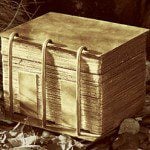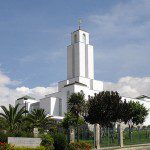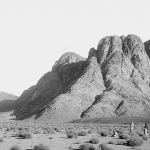
(Image from the website of BYU’s Religious Studies Center)
But first, I give you two items that were newly published today on the website of the Interpreter Foundation:
The discussants in the Interpreter Radio Roundtable for Come, Follow Me Book of Mormon Lesson 50, “He Shall Come into the World to Redeem His People,” on Christmas, were Bruce Webster and Kris Frederickson. This roundtable was extracted from the 15 November 2020 broadcast of Interpreter Radio. The complete show may be heard at https://interpreterfoundation.org/interpreter-radio-show-november-15-2020/. The Interpreter Radio Show can be heard Sunday evenings from 7 to 9 PM (MDT), on K-TALK, AM 1640, or you can listen live on the Internet at ktalkmedia.com.
And, kindly prepared by Jonn Claybaugh:
***
And here’s something else:
It was, I thought, a thoroughly non-partisan statement:
“Church Leaders Congratulate President-Elect Joe Biden”
It was exactly the same kind of statement that was released by the First Presidency and the Quorum of the Twelve Apostles back in 2016, upon the election of Donald J. Trump, when they wrote:
“We invite Americans everywhere, whatever their political persuasion, to join us in praying for the president-elect, his new administration and for elected leaders across the nation and the world. Praying for those in public office is a long tradition among Latter-day Saints. The men and women who lead our nations and communities need our prayers as they govern in these difficult and turbulent times.”
Without looking for it, though, I’ve already seen somebody’s ripped up temple recommend online, accompanied by a declaration from that person that the leaders of the Church of Jesus Christ of Latter-day Saints are “corrupt.” This has put me in mind of a passage from the Hebrew Bible:
And if it seem evil unto you to serve the Lord, choose you this day whom ye will serve; whether the gods which your fathers served that were on the other side of the flood, or the gods of the Amorites, in whose land ye dwell: but as for me and my house, we will serve the Lord. (Joshua 2415)
***
Let’s, though, go for something much more positive. This is an absolutely wonderful story:
“Latter-day stripling warriors: The Korea Seoul Mission’s touching visit to sacred ground”
***
I’ve been reading in Daniel L. Belnap, Illuminating the Jaredite Records (Provo and Salt Lake City: Religious Studies Center, Brigham Young University, and Deseret Book, 2020. It’s a collection of articles by various scholars examining several facets of the book of Ether, a unique and chronologically distinct part of the Book of Mormon.
-1-
The first of these articles is Daniel L. Belnap, “‘They Are of Ancient Date’: Jaredite Traditions and the Politics of Gadianton’s Descent” (1-42). Dan Belnap is a professor of Ancient Scripture at Brigham Young University. He earned an MA in ancient Near Eastern studies from BYU and an MA and a PhD in Northwest Semitics from the University of Chicago, with specialties in Hebrew Bible, Ugaritic studies, and ritual studies:
In my two ancient companion articles “The Gadianton Robbers as Guerilla Warriors” and “Notes on ‘Gadianton Masonry,'” originally published in William J. Hamblin and Stephen D. Ricks, eds., Warfare in the Book of Mormon (Salt Lake City and Provo: Deseret Book and Foundation for Ancient Research and Mormon Studies, 1990), I argued that the notorious Gadianton Robbers of the Book of Mormon were not merely criminals, let alone only a shallow copy of early nineteenth century Freemasonry, but a political/ideological movement of alienated and disaffected people who resorted to paradigmatic guerrilla warfare techniques in a bid to overthrow the Nephite regime.
In this article, Professor Belnap makes a careful and meticulous case for the idea that Nephite secret combinations — the “Gadianton Robbers,” in particular — represent the recrudescence of an element of Jaredite civilization (the culture that had preceded the Lamanites and the Nephites) that Nephite prophets had vainly sought to suppress and to hide. He sets out a a very methodical argument, including the sketching of seams and divisions between the Nephites and the majority Mulekites over whom they ruled, and I wish it had been around when I wrote those two articles nearly thirty years ago.
-2-
The second is Kerry Hull, “Divination as Translation: The Function of Sacred Stones in Ancient Mesopotamia and the Book of Ether” (43-83). Kerry Hull is also a professor Ancient Scripture at BYU. After earning a BA in Spanish and a BA in French from Utah State University, he received an MS in applied linguistics from Georgetown University. Thereafter, he completed a PhD in linguistic anthropology at the University of Texas at Austin. His academic interests include Maya linguistics and anthropology, Polynesian linguistics, historical linguistics, sociolinguistics, and Maya epigraphic studies.
Professor Hull begins his essay by arguing for northern Mesopotamia as the original home of the Jaredites before their transoceanic voyage to the Americas. After drawing upon research into ancient Hebrew lore regarding glowing stones by the late John A. Tvedtnes, he carefully examines texts from Mesopotamia regarding luminescent stones and stones used for divination.
Properly contextualizing the use of sacred stones in ritual requires a review of the historical context of divination in ancient Mesopotamia. (43).
Considering the wide variety of stone use in divinatory rites throughout ancient Mesopotamia, it is not surprising that the brother of Jared instinctively turned to stones as the medium for interacting with the divine. (56)
Professor Hull identifies remarkable parallels between, on the one hand, the stones used in the Jaredite barges and even the Jaredite seer stones and, on the other hand, the luminescent stones called, in ancient Akkadian, elmēšu, and later, in the Greek Septuagint, ἤλεκτρον (ḗlektron), and in Jerome’s Latin Vulgate, electrum:
The elmēšu, a stone or material imbued with supernatural qualities, including melammu [‘a powerful type of divine radiance, a “supernatural awe-inspiring sheen,”‘ . . . ‘a “lordly radiance” or “royal shine”‘], is a close correlate with the sixteen stones the brother of Jared used to illuminate the barges. Furthermore, use of the elmēšu stone in oracular divination in Mesopotamia and its close connection to the Urim and Thummim make it intriguingly analogous to, if not prototypical of, the Jaredite seer stones. (51)
Posted from St. George, Utah











